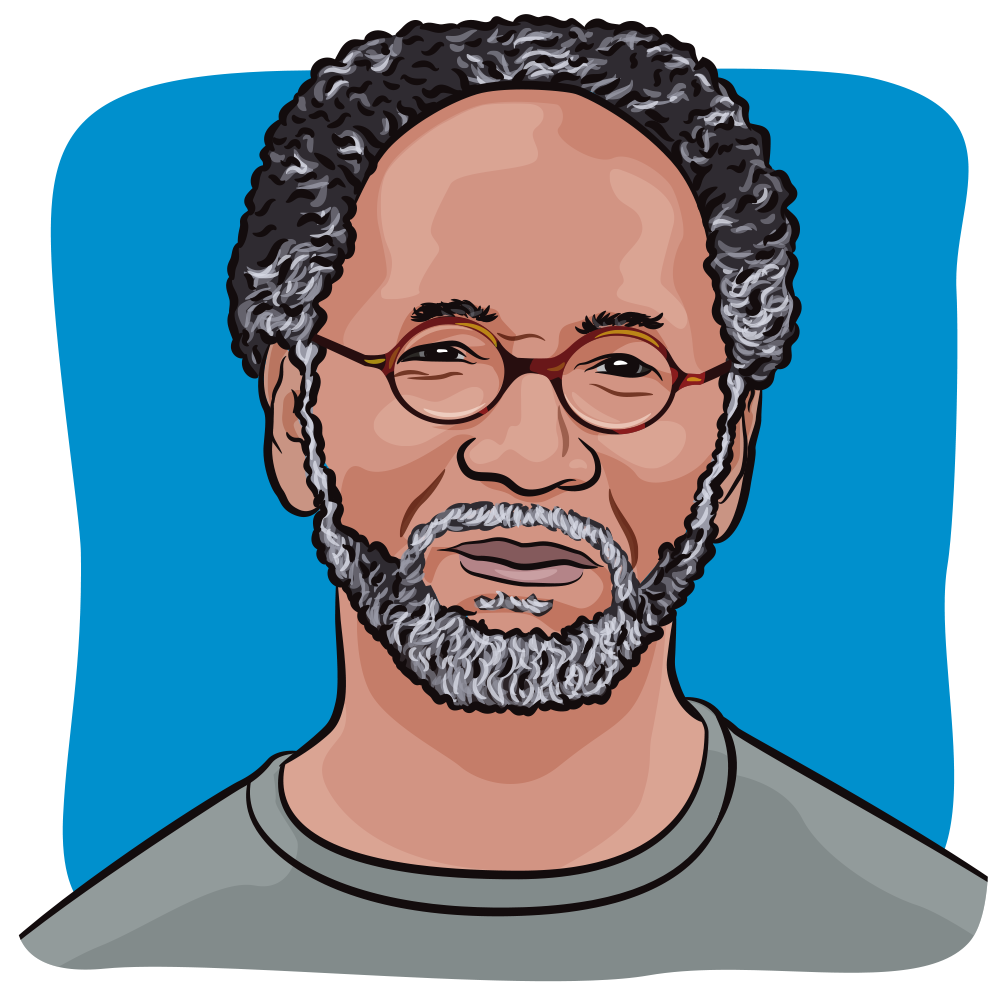Publication
Article
Heal
Prostate Protection
Author(s):
Medicines, lifestyle changes and nutrients may help ward off cancer
The statistics on prostate cancer are sobering: One in six American men will be diagnosed with the disease in their lifetime, and almost 30,000 die from it each year.
Nevertheless, there’s good news: A large percentage of prostate cancers may be preventable through the use of drugs such as finasteride and easy-to-implement lifestyle changes. There is also increasing evidence, some researchers say, that naturally occurring substances such as lycopene (which is found in tomato-based products), selenium and vitamin E may also play a role in reducing prostate cancer risk.
While research hasn’t yet demonstrated the extent to which such preventive measures might actually reduce the disease’s death rate, such efforts do promise to spare an untold number of men the significant side effects that can accompany prostate cancer and its treatment.
“I am 95 percent confident that within the next one to five years we will be able to make tremendous evidence-based recommendations that men can either make a lifestyle change or take some kind of tablet or supplement that will drastically alter their risk of getting prostate cancer in their lifetime,” says Neil Fleshner, MD, MPH, who heads the division of urology for the University Health Network in Toronto.
Of all of the compounds being studied for prostate cancer prevention, finasteride — a drug initially developed to ease symptoms of benign prostatic hyperplasia — has shown the greatest efficacy, reducing risk by nearly 25 percent in the National Cancer Institute-sponsored Prostate Cancer Prevention Trial, a placebo-controlled, seven-year study involving 18,882 American men. In fact, the results of this landmark research were so overwhelmingly positive that the study was concluded early, notes Ian M. Thompson, MD, professor and chairman of the department of urology at the University of Texas Health Science Center School of Medicine in San Antonio, and lead author of a 2003 report on the study published in The New England Journal of Medicine.
Finasteride is an androgen suppressor, meaning it blocks an enzyme in the prostate that changes testosterone (an androgen) into a more powerful form called dihydrotestosterone, which is known to stimulate prostate cancer growth, explains Thompson.
The drug is considered safe, with minimal side effects, but one of the results of the Prostate Cancer Prevention Trial was an increase in detection of higher-grade tumors among participants who were found to have cancer. An editorial that accompanied the 2003 study suggested that this finding should prevent finasteride from being marketed as a preventive measure for prostate cancer. But in the ensuing years, most researchers have concluded that the drug does not increase risk of higher-grade cancers, it just makes them easier to detect.
“One of the main views is that [the increase in higher-grade cancers] may be artificial,” says Yair Lotan, MD, assistant professor in the department of urology at the University of Texas Southwestern Medical Center in Dallas, and senior author of a detailed analysis of the trial findings published in the journal Cancer.
“If you shrink the prostate, which finasteride does, then you’re more likely to find even small amounts of high-grade cancer. It’s like finding a needle in a haystack. When you reduce the size of the haystack by half, finding the needle becomes much easier.”
Men most at risk of developing prostate cancer — those with a family history and African-American men, who have a much higher risk than white or Asian men — are likely to benefit the most from taking finasteride. But men who suffer from urinary problems because of an enlarged prostate should also discuss the drug with their physicians because of its prostate-shrinking properties, Thompson notes. “Those men will get twice the benefit,” he observes. “One, their urination will improve, and two, it will reduce their risk of prostate cancer.”
Dutasteride, a chemical cousin to finasteride, is also being assessed as a possible preventive for prostate cancer. A large phase 3 trial called REDUCE (Reduction by Dutasteride of Prostate Cancer Events) is looking at the effect of the drug in 8,250 patients between 50 and 75 years of age who have elevated levels of prostate-specific antigen, or PSA, a marker for prostate cancer, and who have a negative biopsy.
A repeat biopsy will be performed in two to four years to determine the drug’s impact in preventing cancer, report Fleshner and Alexandre Zlotta, MD, PhD, in a recent overview of prostate cancer prevention in the journal Cancer.
Also under study is the drug toremifene, used to treat breast cancer. The drug, of a type known as a selective estrogen receptor modifier, is of interest to scientists because estrogens — a so-called female hormone that is also present in men — have been found in laboratory animals to cause prostate cancer. Research on toremifene and prostate cancer, however, is still in the relatively early stages.
A class of anti-inflammatory drugs known as COX-2 inhibitors represented another family of medication once considered for study in the prevention of prostate cancer. However, one major study in this area, involving 15,000 men, was derailed when the COX-2 inhibitor Vioxx (rofecoxib) was taken off the market due to health concerns.
“Some people believe that inflammation plays a very important role in the formation of cancer, along with free radicals,” notes Lotan. “There was a strong [indication] for investigating these agents, but unfortunately all studies have been halted and there aren’t going to be any more that we can foresee.”
Still promising are certain minerals and vitamins, such as selenium and vitamin E, which are being evaluated in a large, randomized trial known as SELECT (Selenium and Vitamin E Cancer Prevention Trial), funded by the National Cancer Institute.
Selenium, a mineral found in foods such as potatoes, whole-wheat bread and tuna, is important in cells’ defenses against oxidative stress. Vitamin E is an antioxidant that has been tentatively linked to prostate cancer prevention as a result of a Finnish trial that saw a one-third reduced chance of getting prostate cancer among men who took supplements of the nutrient.
As for lycopene, the red-orange carotene pigment found in tomatoes and other foods, any role in cancer prevention remains unclear, with some studies showing a benefit from high levels of consumption, and others finding no benefit. More carefully controlled studies of the issue are needed, many experts agree.
At the same time, lifestyle changes may be effective in reducing risk, notes Gordon Saxe, MD, PhD, assistant professor in the department of family and preventive medicine at the University of California, San Diego, who has been researching natural approaches to cancer prevention for more than 25 years.
Overall dietary patterns, in particular, are believed to play an important role in the development of prostate cancer. There is some evidence, Saxe notes, that a high intake of red meat and dairy can either promote the development of prostate cancer or accelerate its growth.
The potential influence of diet can best be illustrated by comparing rates of prostate cancer in China and the United States. The rate of prostate cancer is about 80 times greater in the U.S. than China, Saxe says, and one of the presumed reasons is the Asian diet, which tends to be higher in whole grains (such as unpolished rice) and vegetables, and lower in saturated fat.
“Japan, like China, also has a lower rate of prostate cancer,” Saxe says. “When researchers looked at Japanese men who had migrated to the United States, it was found that their rates of prostate cancer had skyrocketed. They had rates of invasive prostate cancer four to nine times higher than men who still lived in Japan, and the rate was higher still in their offspring.”
Saxe notes that certain foods prevalent in Asian diets, such as tofu and green tea, are being closely examined to determine whether they contribute to the lower rates of prostate cancer among men in these countries. “When we investigated, we identified compounds in these foods that seem to affect the growth of prostate cancer cells in the laboratory,” he says.
According to Saxe, men who are most at risk of developing prostate cancer should consider a holistic approach to prevention, including a reduction in red meat and dairy intake; an increase in consumption of whole grains, vegetables, beans and fruit; regular exercise; and stress reduction via meditation, yoga or other approaches.
“Those who would benefit the most, in my opinion, are men already suffering from prostate cancer as well as those with a strong family history of prostate cancer, co-existing health problems such as diabetes or heart disease, or precancerous conditions such as prostatic intraepithelial neoplasia,” a noncancerous growth of cells lining the prostate gland’s internal and external surfaces, Saxe notes.
“African-American men would also benefit because they are more likely to be overweight when they are diagnosed, as well as have a higher grade of cancer,” he says. “African-American men are also more likely to have a relapse, so their prostate cancers tend to have a more aggressive course.”
As scientists learn more about how prostate cancer arises, even newer approaches may be on the horizon, Fleshner and Zlotta noted in their article in Cancer. Promising areas of investigation include the role played by obesity and insulin resistance (and the potential benefits of different diabetes drugs as preventive measures). Also of interest are the possible benefits of the cholesterol-control drugs known as statins, and the potential of developing a prostate cancer vaccine, based on what the researchers call “tantalizing data on novel viruses.”
While the array of promising approaches to preventing prostate cancer is growing, and several studies are in progress, researchers warn that men should be wary of commercial compounds touted for cancer prevention because most claims are, at this point, purely anecdotal.
“For many compounds, the science is rather sparse from a clinical standpoint,” says Lotan. “In regard to prostate cancer, large, controlled studies are required — there’s no real way around that. There must be more than just anecdotal evidence.”
If you shrink the prostate, which fiinasteride does, then you're more likely to find even small amounts of high-grade cancer. It's like finding a needle in a haystack. When you reduce the size of the haystack by half, finding the needle becomes much easier.
When researchers looked at Japanese men who had migrated to the United States, it was found that their rate of prostate cancer had skyrocketed.
In regard to prostate cancer, large, controlled studies are required - there's no real way around that. There must be more than just anecdotal evidence.





